The mid-2010s was a pretty boring time for most triple-AAA games. It was the transition point between the 7th and 8th console generations, so companies were trying to figure out what sold well as games moved over to the PlayStation 4 and XBOX One. The game that marked the end of the PS3 era was The Last Of Us, a cover shooter as many popular games were during this generation, with the added spice of survival mechanics, a blend of stealth and action combat and, most importantly, an air of prestige. This wasn’t just a video game; it was an *interactive narrative* with real actors and music and dialogue. Essentially, it was very much apeing the structure and pacing of acclaimed TV shows of the time, and doing so very successfully, I should add. It came out in 2013, many applauded it as a masterpiece and a step forward for the medium, and a real argument for why video games should finally be recognised as art.
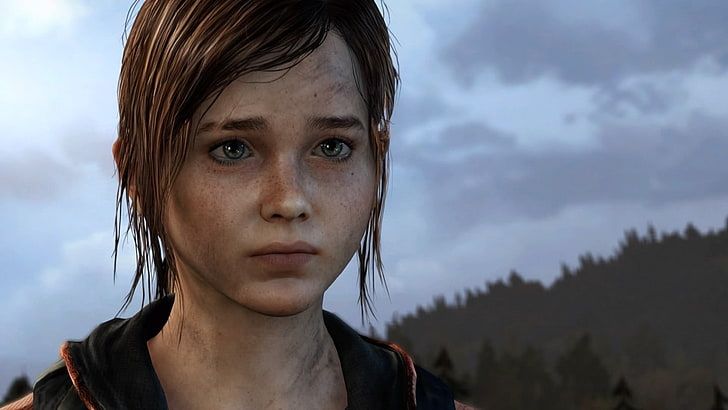
In actuality, a lot of this talk from journalists and gamers alike was a little exaggerated. The truth was that The Last Of Us didn’t break any new ground in what it was doing. It was simply a good story told excellently, with some fun gameplay refined to near perfection, as Naughty Dog is wont to do with most of their releases. However, it did mark a turning point for blockbuster games, or at least the tone by which games would regard themselves. Video games couldn’t simply be fun anymore; they had to say something, be more than just themselves. They had to justify themselves beyond their stereotype as a child’s toy. Of course, anyone who actually cared about games as a medium knew that they had been doing this since their inception, but we’re trying to get in the headspace of a corporation more concerned with branding than artistic expression.
You might be wondering why I’m talking about The Last Of Us when Tomb Raider, the focus of this discussion, released months before to similar, though not as overwhelming, positive reception. I bring it up for a simple reason: we still talk about The Last Of Us, but nobody ever mentions Tomb Raider or regards it to the same medium-defining level. Why is that?

The easy answer would be to say that it’s just not as good. The story is comparatively weaker and lacks the same focus, and the combat is a bit more of a generic shoot-em-up than the grounded desperation fights often evoked in The Last Of Us. However, at a cursory glance, the two aren’t so different in their intentions. They are both stories about survivors navigating unknown and dangerous areas flush with raiders and other, darker threats, and they both incentivise scavenging and manual weapons crafting as major mechanics. Their puzzles are baked into the environment and often have simple solutions. And, of course, they are both cover shooters with an emphasis on stealth which often seamlessly transitions into tense gunfights when the player is spotted. Narratively, they are about protagonists going through hell and coming out the other side changed people, for better or for worse. They are gory, uncompromising, and want desperate to be taken serious. Whether or not they earn that isn’t really important; what matters is the intent.
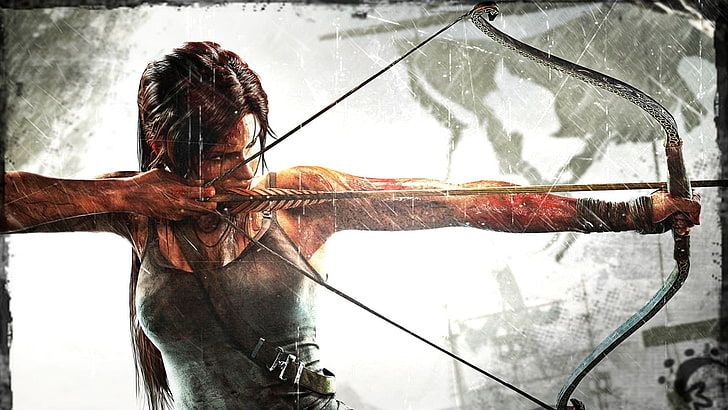
So why is it that The Last Of Us impacted so many, while Tomb Raider simply did not. To me, it’s an issue of identity, and that is undoubtedly born from a conflict of ideas between the developer of the latter, Crystal Dynamics, and their publisher, Square Enix. I should say that I have no idea if what I’m about to assert is true or real; I’m running off the vibes I absorbed through playing Tomb Raider to completion.
There are signs everywhere of a different Tomb Raider game that never was. The survival mechanics are a clear giveaway. The game encourages scavenging and scrounging as part of its overall loop in a variety of wars, be it through breaking open chests and crates, looting enemy bodies, or hunting the island wildlife for extra resources. It all points towards a version of Tomb Raider where ammo and crafting resources are scarce, and as such Lara must rely on every advantage she can muster to make it through. She starts in the literal mud and crawls her way to the top of the food chain by any means necessary. At least, that seems to be the intent.
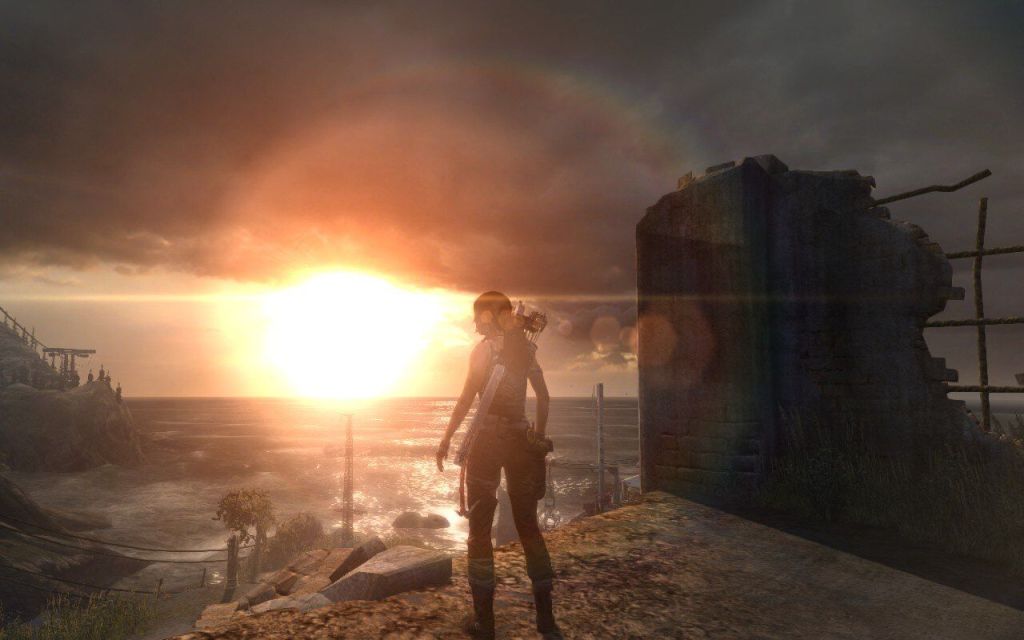
However, in practice, it all feels a little pointless. Lara is always flush with ammunition for her impressive arsenal even without any upgrades. Furthermore, upgrades to her guns or bow always feel a bit useless since a well-placed headshot always results in a kill, because every enemy, with the exception of the last couple missions, is just an ordinary human bandit, so their weaknesses are more or less all the same. The more interesting fights are ones where the enemy is armoured and you have to duck and weave through their attacks to find openings in their defense. Even then, however, a well placed shotgun round will usually do the job just fine after a couple tries. The game seems to want to evoke the same sensation as The Last Of Us – fear and desperation as you go through boxes and lockers in search of any edge over this world that fights against you – but it is constantly at odds with the reality that it is also a bombastic, Uncharted-esque linear action game. It tries to have it both ways, but these dual personalities undercut each other’s potential at every turn.
So what about the exploration, the titular ‘tomb raiding’? Well, it is similarly neutered by the rest of the game, but it also feels as though at some point that may not have been the intent. My main point of evidence is the torch. Torches are often used by Lara to navigate through dark areas, such as the loading corridors into tombs or the dark caves often present in story sections. At a certain point, Lara can summon a torch whenever she likes once she acquires a lighter (or something like that, I can’t remember the specific tool).

What made me perk up was when I noticed the sheer amount of unique animations tied to when Lara is holding a torch. Searching chests looking for valuables is a big part of the game, and every time you find one, it plays a little animation of Lara opening the chest and examine its contents. However, if you’re holding a torch, she’ll take the extra action of setting it aside before doing anything. The same is true for breaking open crates, where she’ll hold the torch a certain way so as not to drop it but still get what she needs. Climbing has a similarly considered approach to the way Lara holds her torch while scaling cliffs or shimmying across chasms. It’s very weird once you notice it, and you might just put it down as some nice attention to detail. But it feels weird to me when the game isn’t exactly what I’d consider “realistic” by any metric.

The moment that confuses me the most was when I realised that when Lara has a torch equipped and you aim a weapon to attack someone, she automatically pulls her pistol, even if it isn’t your most recently used weapon, as is the usual rule in this game. It stood out to me because that’s a deliberate choice the developers made where Lara’s use of a torch is more important than what gun she uses in a critical moment. It made me wonder: was the torch supposed to be a more significant inclusion at some point? It made me imagine an idea for a mechanic where you need a torch to see in a dark area, but you can only shoot a pistol while using your light source, thus presenting a situation where you have to limit your weapon choices, or sacrifice visibility. It could be a cool way to raise tension in a given situation. You even see a flash of this in action with a very early mission where you’re tasked with retrieving a supply pack from a wolves’ den deep inside a pitch dark cave. It makes me wonder what kind of game Tomb Raider could have been were it to commit to these more interesting concepts rather than conceding to the safe and familiar.
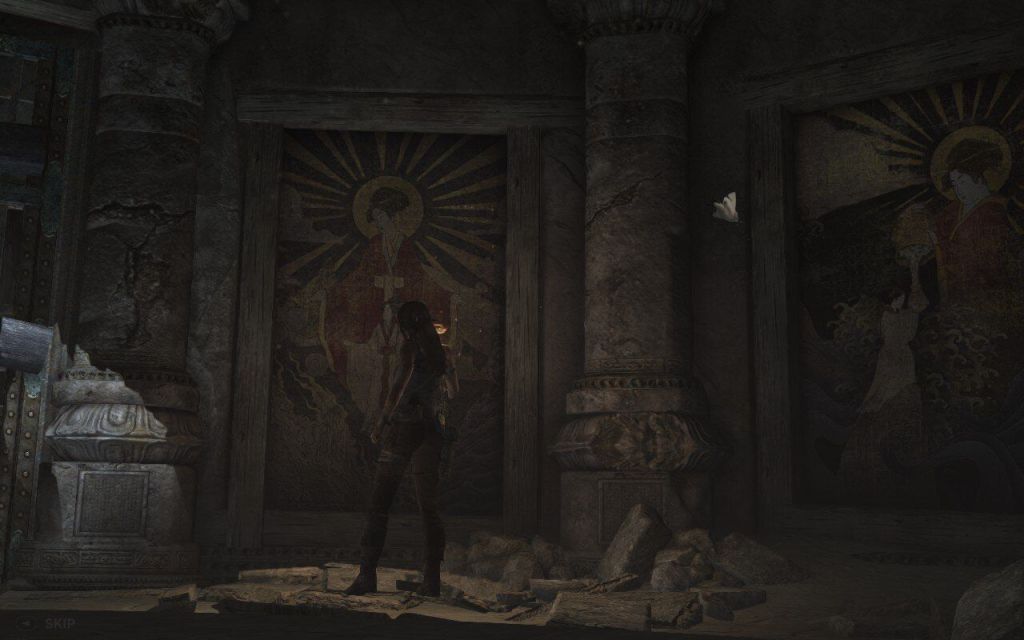
This identity crisis is present in the tone of the game as well. On the one hand, it’s a gritty imagining of the origins of Lara Croft, famed treasure hunter and explorer. She’s confident and cunty in equal regard, so a story about how she got there could be interesting. In practice, Tomb Raider 2013 is a tale of a young archaeologist turned action hero, molded by dire circumstances necessitating that she learn to survive against impossible odds. Her arc is actually pretty compelling over the course of this story. You see her transform from this naïve dreamer trying to live up to her family name, into this slightly jaded, yet ultimately still caring, protector, who learns to trust her instincts and follow her own path. It’s not terribly complex, but it’s good! It works, and I like how the grim setting acts as a catalyst for that change.
However, there are points where the grimdark-ness of this game ventures into slight silliness. Whenever Lara was put in a room with dozens of dead bodies and mountains of gore and viscera, I straight up could not take it seriously. Lara getting stabbed through the abdomen by a rusty pipe? I’m in! Lara navigating a butcher’s den? A little harder to buy into. There’s this feeling I got whenever the game threw disembodied heads and limbs in my face where it felt as though it wanted to be taken seriously so bad, insisting upon its adult-ness, as opposed to just writing an intelligently written story with adults in it. Tomb Raider sometimes demands that you take it seriously, when it never needed to do all that. There’s a perfectly good story at the heart of the game that does the work already; just calm down and believe in yourself!
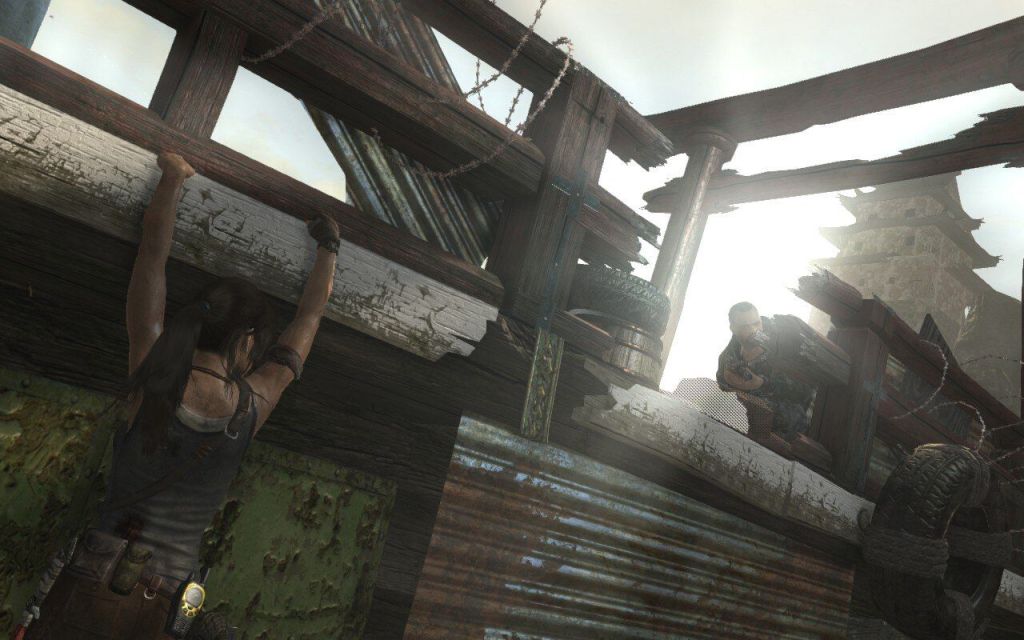
It doesn’t really help that you spend most of your time in this game mowing down literally hundreds of human beings. It kinda takes away from the grounded tone the game sets for itself, especially when every person you fight brings some variation of an “you killed my friend so I’m gonna kill you!” energy to all encounters, always in their best possible dumb henchman voice. The bad guys in this game are so cartoonishly evil, which is funny considering I think they’re also supposed to be a sort of dark reflection of what Lara might become if she’s unable to escape this island. I don’t know; maybe Lara and her friends are simply built different.
Despite everything, I still kinda like Tomb Raider. There’s clear intent to a lot of its strongest moments. The island itself has a rich history to discover, and the more open-ended areas are designed to be approach from many angles, with plenty of secrets to be found in every nook and cranny. I like the process of actually playing this game, and I can tell that an awful lot of talented people at Crystal Dynamics are responsible for that. Unfortunately, the project is mired in this conflict between the survival-exploration game they clearly wanted to make, and the action title they were likely expected to deliver for Square Enix.
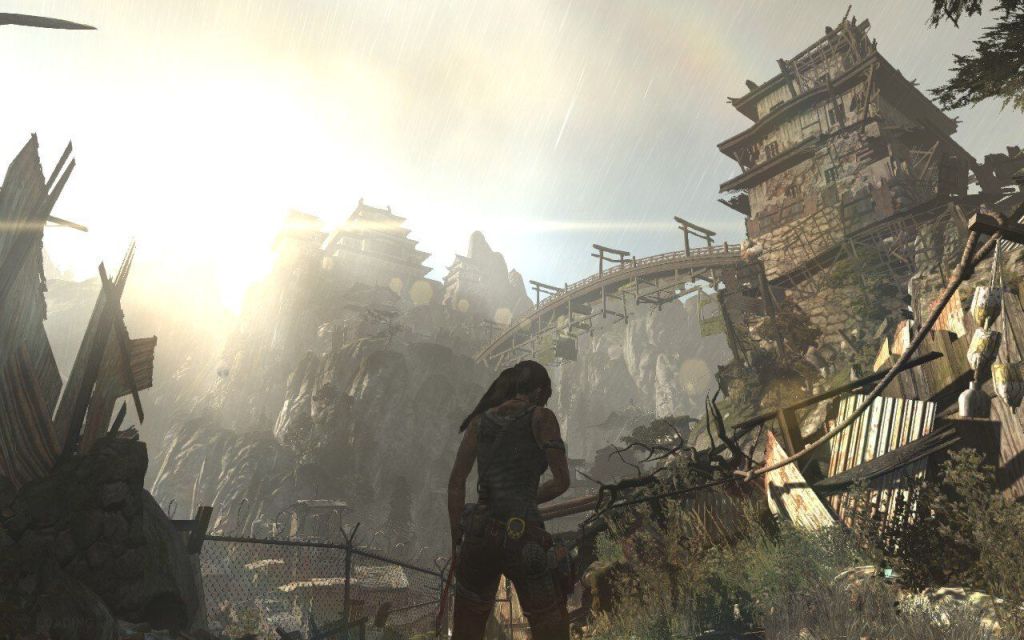
The reason we remember The Last Of Us fondly while Tomb Raider is often lost in the haze of late-7th gen releases is because the former has clarity of purpose. Naughty Dog clearly had a vision for what they wanted their game to be, and rarely compromised on it. It’s a story about people in a desperate situation fighting to survive, and the gameplay mechanics further that sensation. Tomb Raider is aiming for the same kind of narrative, but within the trappings of a blockbuster action romp, it struggles to deliver its message effectively. We don’t connect with Tomb Raider because we don’t get a good sense what Lara is going through personally. To us, she’s basically a superhero; the legendary Tomb Raider herself. In the end, she is what she sets out to be: not a human, but a Croft.

Leave a comment